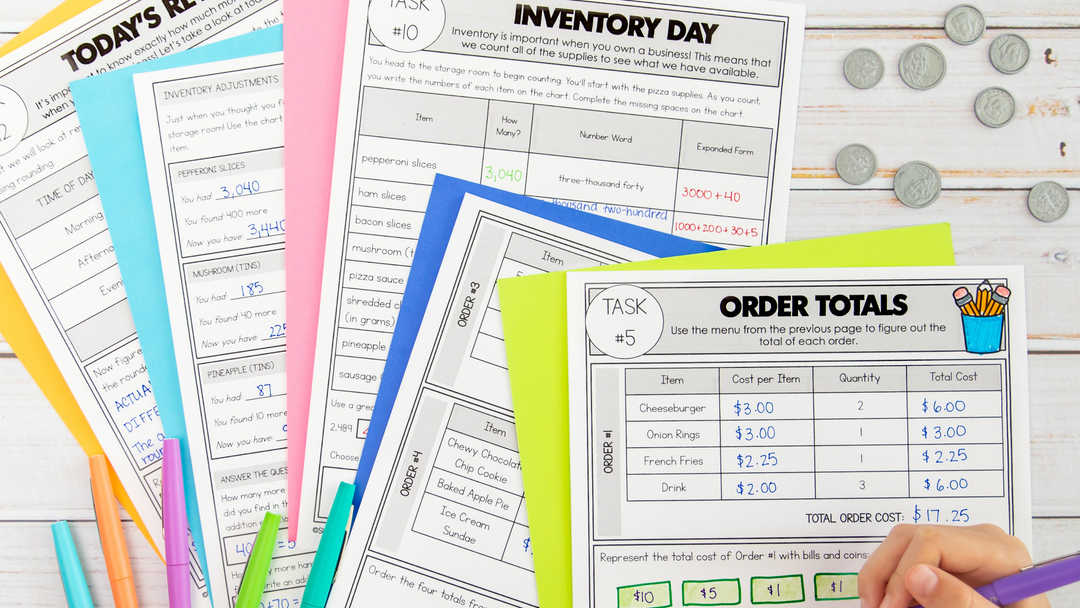SEE ALL REAL-LIFE MATH PROJECTS AND ESCAPE ROOMS HERE.
*
*
IMPORTANT NOTE!
Please note that you are viewing the FRENCH IMMERSION version of this math project. Looking for the original English version? See it HERE.
An Important Note About This French Translation:
After years of a high demand for French translations of my resources, I am thrilled to have hired a capable translator to do this translation! Please note that I do not speak fluent French. I understand that there are language differences based on region, so you may find that some words or phrases are different than what you would prefer for your unique classroom. Please note that all French Immersion resources are purchased AS IS. These resources are not editable, and no changes or edits will be made to these translated resources. I appreciate your understanding!
*
*
Are you looking for a way to reinforce basic multiplication concepts in an engaging way that helps your students make connections? “Run a Pet Shelter” is a real-life math project where students will complete NINE different multiplication tasks. This project will help your students see how multiplication is used in real life.
You might choose to print specific tasks to use during Math centers, or you might make a booklet out of all nine tasks and let your students choose which one to do when. The choice is yours.
Take a look at what you’ll find inside this math project:
TASK #1: COLLECTING DONATIONS
Donations are essential for your pet shelter. They help you buy food and supplies for the pets that you care for.
Multiplication Skills: basic facts, repeated addition, arrays
Other related math skills: addition, reading a chart
TASK#2: SHELTER SUPPLY INVENTORY
It’s time to do inventory of all of the pet supplies! Let’s go to the supply room and figure out how much we have!
.
Multiplication Skills: basic facts, groups of, arrays
Other related math skills: tally charts, addition
TASK #3: IT’S FEEDING TIME
Feeding time at the pet shelter is the busiest time of the day! Can you help plan the amount of food that is needed?
Multiplication Skills: basic facts, groups of, arrays
TASK #4: DOG RUN DECISIONS
You’re designing a brand new outdoor dog run for the pet shelter! The area of the dog run MUST BE exactly 24 square meters. Draw 3 possible designs. Be sure to label each side with the length in meters.
Multiplication Skills: basic facts, fact families, area
TASK#5: VET VISITS
Once a month, the local vet comes to the pet shelter to do a check-up on the animals. How long will she need?
.
Multiplication Skills: basic facts
Other related math skills: addition, time
TASK #6: PETS BY THE MONTH
Because animals are constantly coming in to the pet shelter and also being adopted, the number of pets fluctuate from month to month. Use the graph to figure out how many pets were in the shelter each month last year.
Multiplication Skills: basic facts, skip-counting
Other related math skills: graphing and data interpretation
TASK #7: ADVERTISING FOR ADOPTION
The pet shelter advertises around the city so that more pets can get adopted. All of the advertisements cost money, and it’s very important for the pet shelter to stay within their budget.
Multiplication Skills: basic facts, fact families, area
TASK#8: FUNDRAISING
The pet shelter holds two major fundraisers every year. Figure out how much is earned from each one.
.
Multiplication Skills: basic facts, fact families
Other related math skills: subtraction
TASK #9: ADOPTION DAY
It’s Adoption Day at the pet shelter! Crack the codes to find out which pet is chosen by each family.
Multiplication Skills: basic facts
*
*
*
WAYS TO USE MATH PROJECTS IN YOUR CLASSROOM:
Math projects are an ideal way to consolidate learning. I recommend using them as an engaging activity AFTER skills have been learned rather than during learning. You will likely find that engagement is very high and that your students ask to do more of these!
There are many ways to use math projects in your classroom. Some of the most popular are:
•a small-group or pairs activity
•a guided math activity to allow you to see where your students are struggling
•a fun, rewarding way to engage your early finishers
•a low-prep, easy-to-implement activity for a substitute teacher
•
Enjoy!
Shelley Gray














